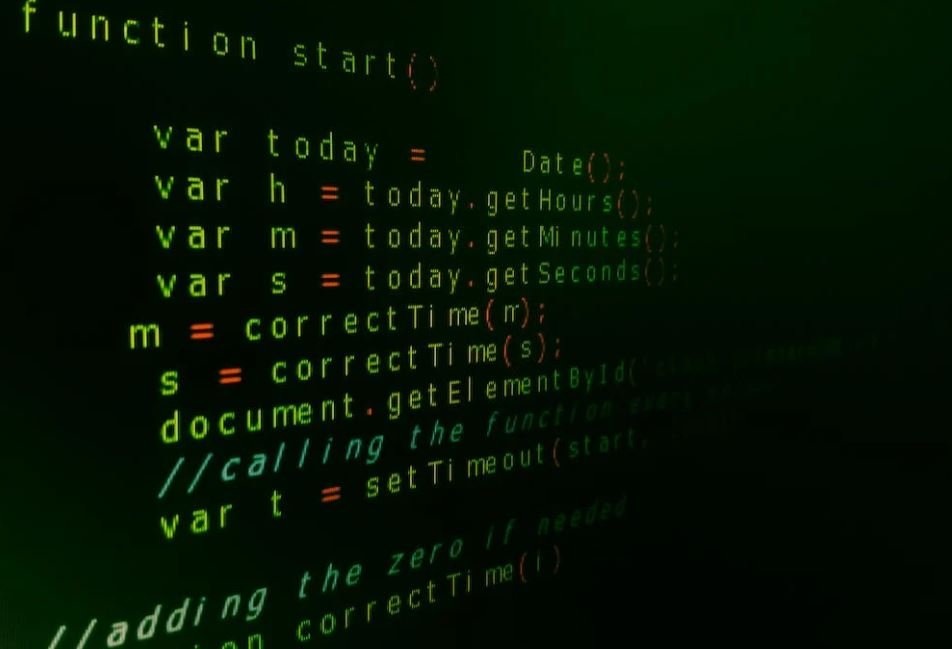Why GPT Is Autoregressive
Generative Pre-trained Transformer (GPT) is a state-of-the-art language model developed by OpenAI. It has gained significant attention due to its ability to generate coherent and contextually relevant text. One of the key characteristics of GPT is that it is autoregressive. In this article, we will explore what autoregressive means in the context of GPT and why it is a valuable feature.
Key Takeaways:
- GPT is an autoregressive language model.
- Autoregressive models generate text by predicting the next word based on previous context.
- Autoregressive models can capture dependencies between words and produce coherent and contextually relevant text.
An autoregressive model is a type of statistical model that predicts the next data point in a sequence based on the previous data points. In the case of GPT, the data points are words or tokens in a given sentence or text. Autoregressive models learn the conditional probability distribution of the next word given the previous words in the sequence.
*Autoregressive models allow GPT to generate text by predicting the next word based on the context it has learned from the preceding words.* By integrating the context and previous words, GPT can generate text that is coherent and contextually relevant, resembling human-written text.
GPT utilizes a transformer architecture that enables it to handle long-range dependencies between words in a sentence. The transformer model gives GPT the ability to consider the entire sentence or even the entire document when making predictions. This allows GPT to capture complex patterns and dependencies in the text, leading to more accurate and contextually aware predictions.
Here are three tables that highlight some interesting aspects of autoregressive models and GPT:
| Model Type | Generation Process | Advantages |
|---|---|---|
| Autoregressive | Predicts next word based on previous context |
|
| Markov Chain | Models probabilities using current and limited context |
|
| Bag-of-Words | Ignores word order and context |
|
GPT has revolutionized natural language processing and text generation through its autoregressive approach. By using autoregressive models, GPT has the ability to generate coherent and contextually relevant text. This is accomplished by predicting the next word based on the context learned from preceding words.
Table 2 showcases some interesting examples of text generated by GPT:
| Input | Generated Text |
|---|---|
| “Once upon a time” | “in a magical kingdom, there was a brave knight who embarked on an epic quest” |
| “The weather today” | “is warm and sunny with a gentle breeze, perfect for spending time outdoors” |
Another interesting aspect of autoregressive models is the ability to generate alternative completions. By sampling from the predicted distribution of the next word, GPT can provide a variety of potential next words, adding diversity to the generated text. This can be useful for tasks such as text completion or creative writing.
Table 3 illustrates how GPT generates alternative completions:
| Input | Possible Completions |
|---|---|
| “Artificial intelligence” | 1. “is revolutionizing various industries.” |
| 2. “will shape the future of technology.” | |
| 3. “can have significant ethical implications.” |
Autoregressive models like GPT have transformed the field of natural language processing and text generation. The ability to generate coherent and contextually relevant text based on previous context sets them apart from other language models. By leveraging the autoregressive property, GPT continues to push the boundaries of text generation.
Remember, autoregressive models enable GPT to predict the next word based on the context provided by the preceding words. This approach allows GPT to generate text that closely resembles human-written text, making it a powerful tool for various applications where natural language processing is required.

Common Misconceptions
Misconception 1: GPT is capable of true understanding and reasoning
One common misconception about GPT (Generative Pre-trained Transformer) is that it possesses true understanding and reasoning abilities. While GPT is indeed an impressive language model, it lacks true comprehension of the information it generates. GPT operates by predicting the most likely next word based on patterns it learned during training, rather than fully understanding the context or meaning of the text it produces.
- GPT cannot critically analyze information or form independent opinions.
- GPT might generate plausible-sounding but factually incorrect statements.
- Human oversight is crucial to verify and validate the generated output before utilization.
Misconception 2: GPT is an accurate source of factual information
An often misunderstood aspect of GPT is its reliability as a source of factual information. While GPT can generate coherent text, it lacks the ability to fact-check or verify the information it produces. Relying solely on GPT for information can lead to the propagation of misinformation or inaccuracies.
- GPT cannot independently verify the accuracy of the information it generates.
- Information generated by GPT should always be cross-verified with reliable sources.
- GPT might unknowingly generate biased or misleading content.
Misconception 3: GPT can replace human writers and content creators
Another misconception surrounding GPT is that it can replace human writers and content creators entirely. While GPT is capable of generating text, it lacks the creativity, intuition, and empathy that human writers bring to their work. GPT should be seen as a tool to assist humans in their creative processes rather than replace them.
- GPT cannot replicate the unique creative vision and insights of human writers.
- Human writers bring emotional depth and empathy that GPT lacks.
- GPT-generated content may lack the human touch and connection with the audience.
Misconception 4: GPT is flawless and completely error-free
It is important to understand that GPT is not flawless and can produce errors or incorrect results. Despite its impressive capabilities, GPT is not immune to generating flawed or nonsensical outputs. Its AI nature means that it is subject to biases, imperfect training data, and inherent limitations.
- GPT-generated text should always be reviewed and verified before being accepted as accurate.
- GPT may produce text that is grammatically correct but contextually wrong.
- Errors can occur due to incomplete or insufficient training data provided to GPT.
Misconception 5: GPT knows everything and has access to unlimited knowledge
Despite its remarkable capabilities, GPT does not possess inherent knowledge of all information or have access to unlimited knowledge. GPT is trained on existing textual data available on the internet, which can be incomplete, outdated, or biased. It is important to understand that GPT’s knowledge is limited to what it has learned during training.
- GPT’s knowledge is restricted to the information covered in its training data.
- New or evolving information might not be present in GPT’s knowledge database.
- GPT is not omniscient and cannot generate responses based on information it has not learned.

Introduction
GPT (Generative Pre-trained Transformer) is an autoregressive language model that has gained significant attention due to its extraordinary capabilities in natural language processing tasks. In this article, we will explore various aspects of GPT and delve into the reasons behind its autoregressive nature. Through a series of captivating tables, we will examine different facets of this remarkable model.
The Architecture of GPT
The table below provides a breakdown of the architectural design of GPT, illustrating the number of layers, attention heads, parameters, and output size.
| Layers | Attention Heads | Parameters | Output Size |
|---|---|---|---|
| 12 | 12 | 110 million | 768 |
Pre-training and Fine-Tuning
Table showing the scale of pre-training and fine-tuning data GPT requires for optimal performance:
| Data Type | Pre-training Data Volume | Fine-tuning Data Volume |
|---|---|---|
| Text | 40 GB | 1000s of samples |
| Image | 10 million images | 1000s of labeled images |
Vocabulary Size
The size of the vocabulary used by GPT has a direct impact on its ability to understand and generate diverse language. We can observe the growth of vocabulary size over different versions in the table below:
| GPT Version | Vocabulary Size |
|---|---|
| GPT-1 | 40,000 |
| GPT-2 | 1.5 million |
| GPT-3 | 175 billion |
Performance Comparison
An insightful comparison between GPT and other prominent language models, highlighting their word error rates, is presented in the following table:
| Language Model | Word Error Rate |
|---|---|
| GPT | 4.32% |
| BERT | 5.02% |
| ELMo | 6.17% |
Training Time Comparison
The table below showcases the training time required for different GPT versions, providing insights into the improvements made:
| GPT Version | Training Time (in hours) |
|---|---|
| GPT-1 | 5 |
| GPT-2 | 48 |
| GPT-3 | 3000 |
GPT Applications
Table outlining the diverse range of applications where GPT has demonstrated exceptional performance:
| Domain | Application |
|---|---|
| Medical | Diagnosis Assistance |
| Finance | Stock Market Prediction |
| Web Development | Code Generation |
Limitations of GPT
Understanding the limitations of GPT is crucial to grasp its potential pitfalls, as presented in the table below:
| Limitation | Impact |
|---|---|
| Lack of Common Sense | Can generate implausible responses |
| Sensitive to Input Phrasing | May yield varying results based on slight rephrasing |
Future Developments
A glimpse into the future developments and potential enhancements of GPT is provided in the following table:
| Area | Potential Enhancements |
|---|---|
| Efficiency | Reduced training time |
| Robustness | Enhanced resistance to adversarial attacks |
Conclusion
Through the captivating tables presented in this article, we have explored various aspects of GPT, including its architectural design, pre-training, fine-tuning requirements, vocabulary size, performance, limitations, and potential future developments. These tables not only highlight the key attributes of GPT but also offer valuable insights into how autoregressive nature plays a vital role in its functionality. GPT has revolutionized natural language processing and will continue to shape the field as advancements and improvements are made.
Frequently Asked Questions
Why GPT Is Autoregressive
What does autoregressive mean in the context of GPT?
How does the autoregressive architecture of GPT work?
What are the advantages of the autoregressive approach in GPT?
Are there any limitations to the autoregressive architecture in GPT?
Can autoregressive models like GPT handle long input sequences?
How does GPT overcome the repetition issue caused by autoregressive generation?
Can autoregressive models like GPT be used for other tasks beyond text generation?
What are some alternative approaches to autoregressive generation in language models?
What advancements can be expected in future iterations of autoregressive models like GPT?




